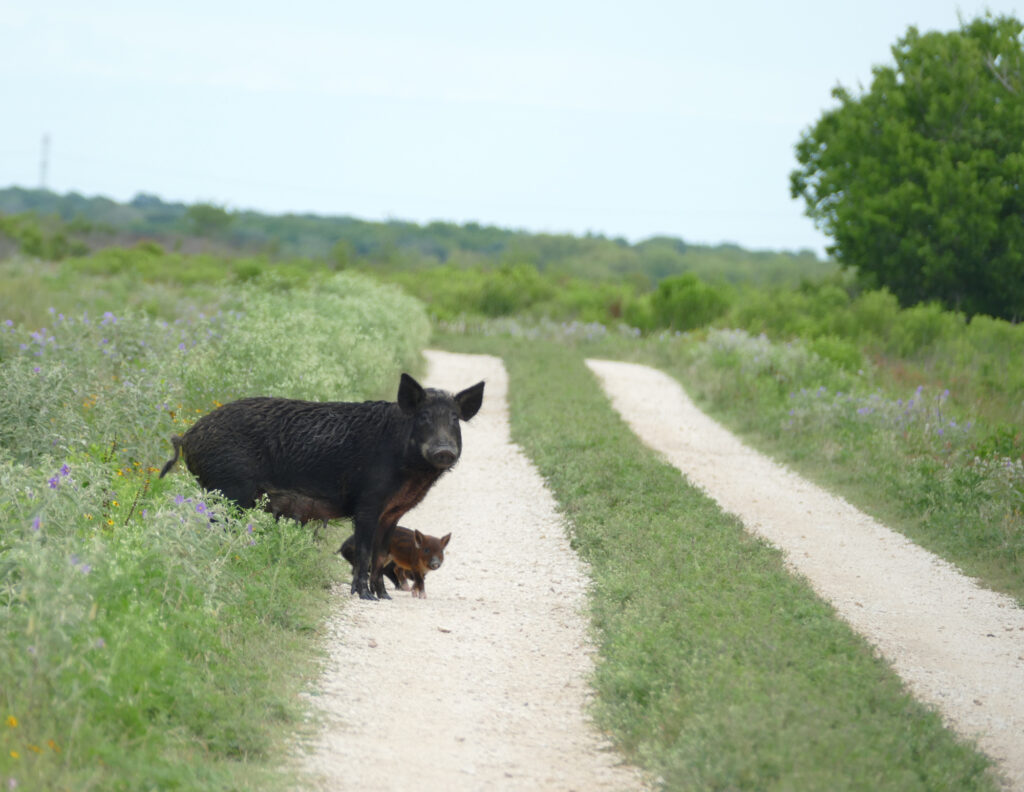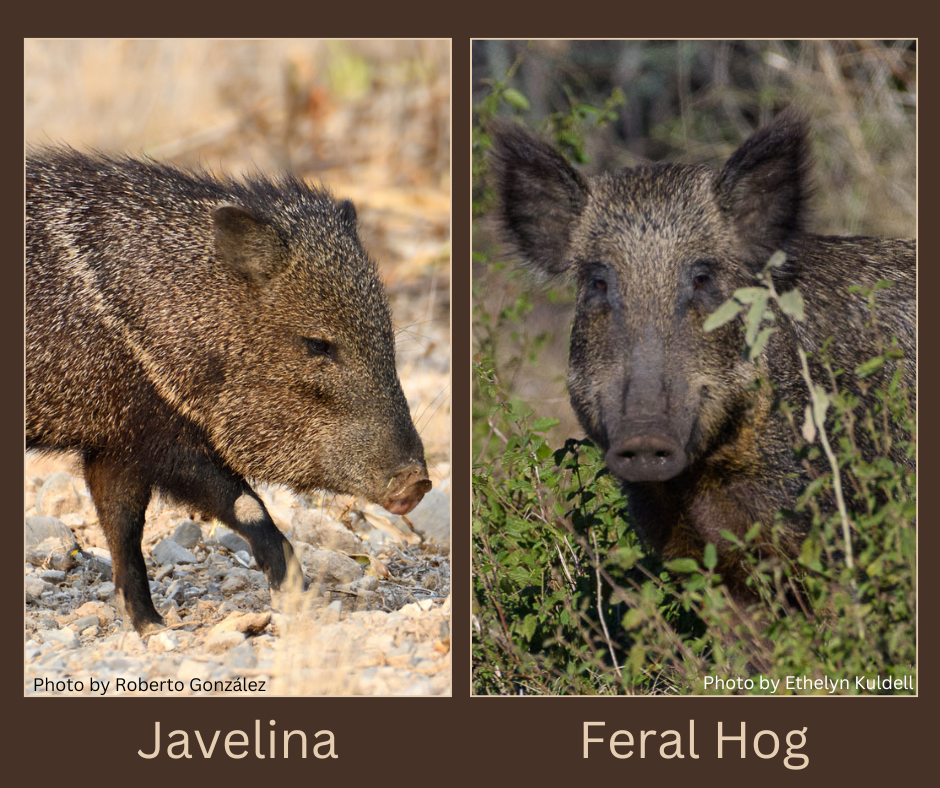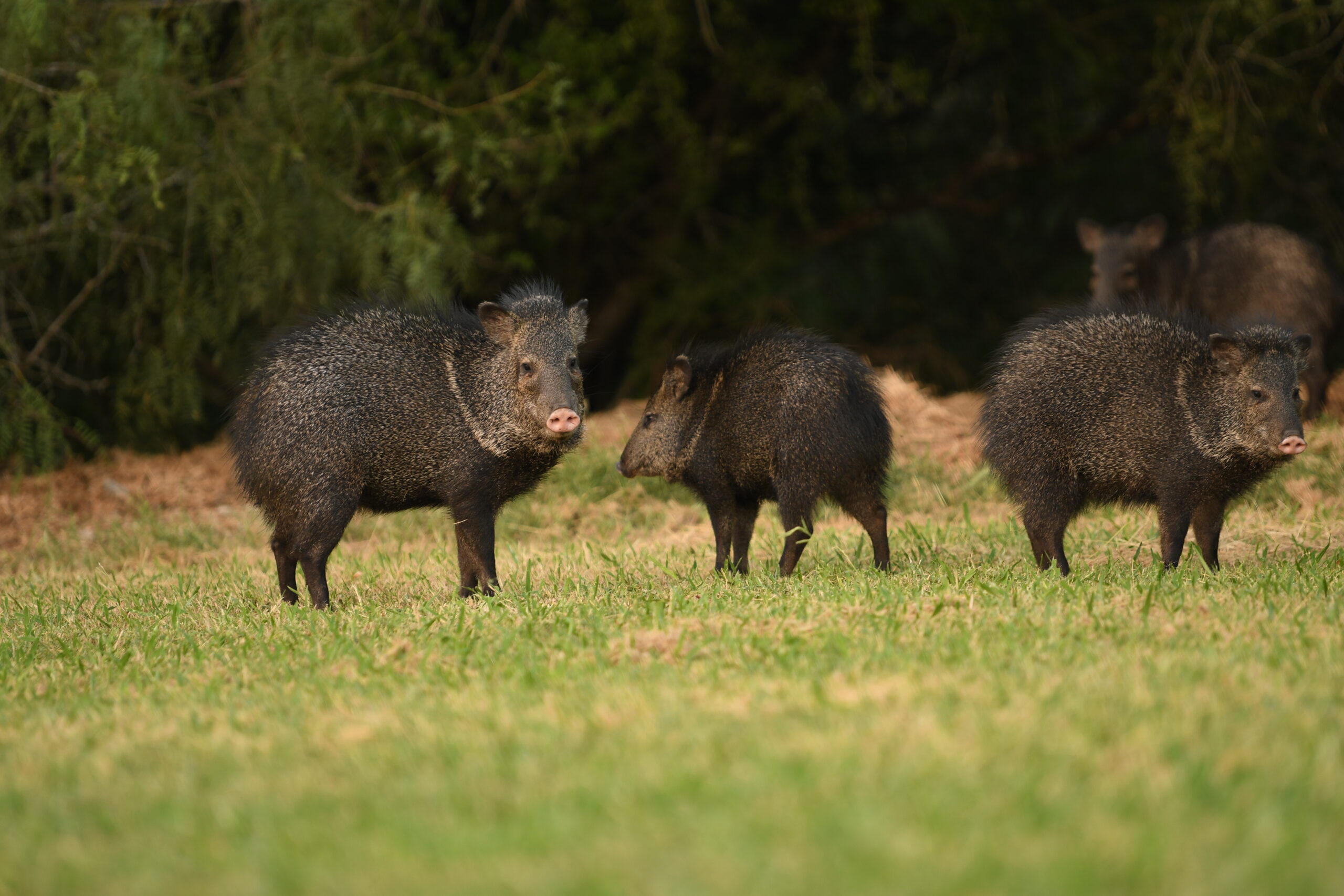Identification is an important part of any management effort, but this is especially true when it comes to feral hogs. In Texas feral hogs are classified as “free ranging livestock” which gives landowners the authority to decide how they are managed. In Southwestern portions of the United States and Mexico, the Javelina (also known as Collared Peccary) can sometimes be mistaken for a feral hog. Javelinas are a native animal considered a game species in Texas, meaning they can only be harvested with appropriate licenses in specified counties and that meat must be harvested. Additionally, as a native animal, they are not harming their surroundings or causing the type of damage associated with feral hogs. To make sure your management efforts are directed at the correct animal, the following characteristics can be used to differentiate between pigs and Javelina.
Size
Javelina are a much smaller animal than feral hogs. An adult javelina typically weighs only 55 pounds while mature hogs can regularly reach weights of 190 pounds or greater. While immature hogs may be closer in size to javelina, they often travel in groups that will include larger more mature adults that are clearly bigger than a javelina.
Ear Shape
Ear shape is another consistent difference between javelina and feral hogs. Javelina have smaller rounder ears that more closely resemble the ears on a “teddy” bear. while feral hogs have longer more pointed ears.
Tail
Typically, a javelina’s tail is not visible. Even when viewed from directly behind, a tuft of hair is often the only thing that resembles a tail on a javelina. Feral hogs, however, do have a distinct tail that is easily visible and can be used as an identifying feature.
Color
Color can sometimes be a difficult identifying characteristic because feral hogs come in such a variety of colors. In their darker colors, feral hogs can closely resemble javelina especially in poor light. However, if you can clearly see a javelina in adequate lighting, you should be able to see a lighter band of fur around the javelina’s neck. This stripe of lighter fur is the reason why the other common name for a javelina is the collared peccary.
Identification is always an important part of management, but it is especially important when the regulations vary so greatly between the two possibilities. To learn more about javelina, see the Texas Parks and Wildlife Department’s webpage on javelina biology.



